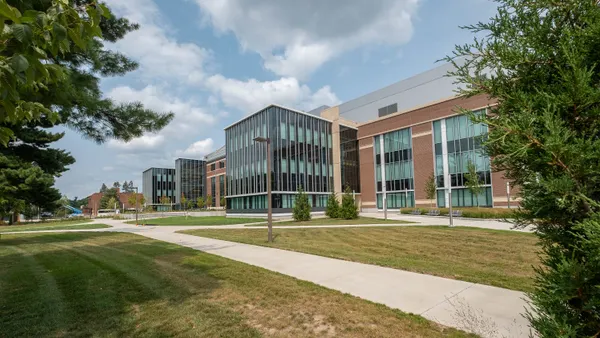Dive Brief:
- The United Kingdom-based Building Research Establishment (BRE) has joined forces with architecture, engineering and design firm HOK to introduce a green building certification program to the U.S. market, the BREEAM (Building Research Establishment Environmental Assessment Method) New Construction standard. Developed in 1990 and used abroad, BREEAM rates the sustainability of buildings and infrastructure based on performance benchmarks.
- HOK, which will advise BRE as it adapts the system for the American construction industry, said the New Construction standard is based on the latest building science. HOK will start piloting the program this summer with new and existing clients and said it plans to "explore" the new standard with complicated projects like laboratories, sports venues and airports.
- BRE said it was motivated to bring the new system to the U.S. after the success of its In-Use standard, which allows owners of existing buildings to assess their level of sustainability and then take action to increase it. According to BRE, the BREEAM approach to sustainable building standards differentiates itself from other green programs because it uses independent assessors to verify that the buildings meet BREEAM requirements. BREEAM has more than two million registered projects and more than 560,000 certified buildings in 77 countries, making it the top global green certification program by volume.
Dive Insight:
BREEAM In-Use burst onto the U.S. green building scene in 2016, and BRE, in partnership with LEED consultancy group BuildingWise, offered up the program and its self-assessment tools as a cost-conscious alternative to the U.S. Green Building Council's LEED certification, which BRE framed as expensive and time-consuming. The company said other certification programs didn't cover the kind of buildings it was targeting but that it was important to monitor and measure their performance levels no matter the age, size or current state of sustainability.
The Oaks retail center in Thousand Oaks, California, was the first U.S. property to earn BREEAM In-Use certification. The 1.3-million-square-foot building, which was built in 1978, was retrofitted with solar panels, LED lighting, efficient HVAC equipment, a mixed recycling system and updated thermal controls.
Before its first building was certified, BRE began exploring collaborations with other certification programs and entered into an agreement with the International WELL Building Institute to identify areas where their two systems overlapped, making it easier for building owners to achieve certification from both. WELL focuses on occupant health and wellbeing and incorporates features like nontoxic finishes, healthy food options, circadian lighting and design — e.g. stair placement, office layout — that promotes movement throughout the day.












